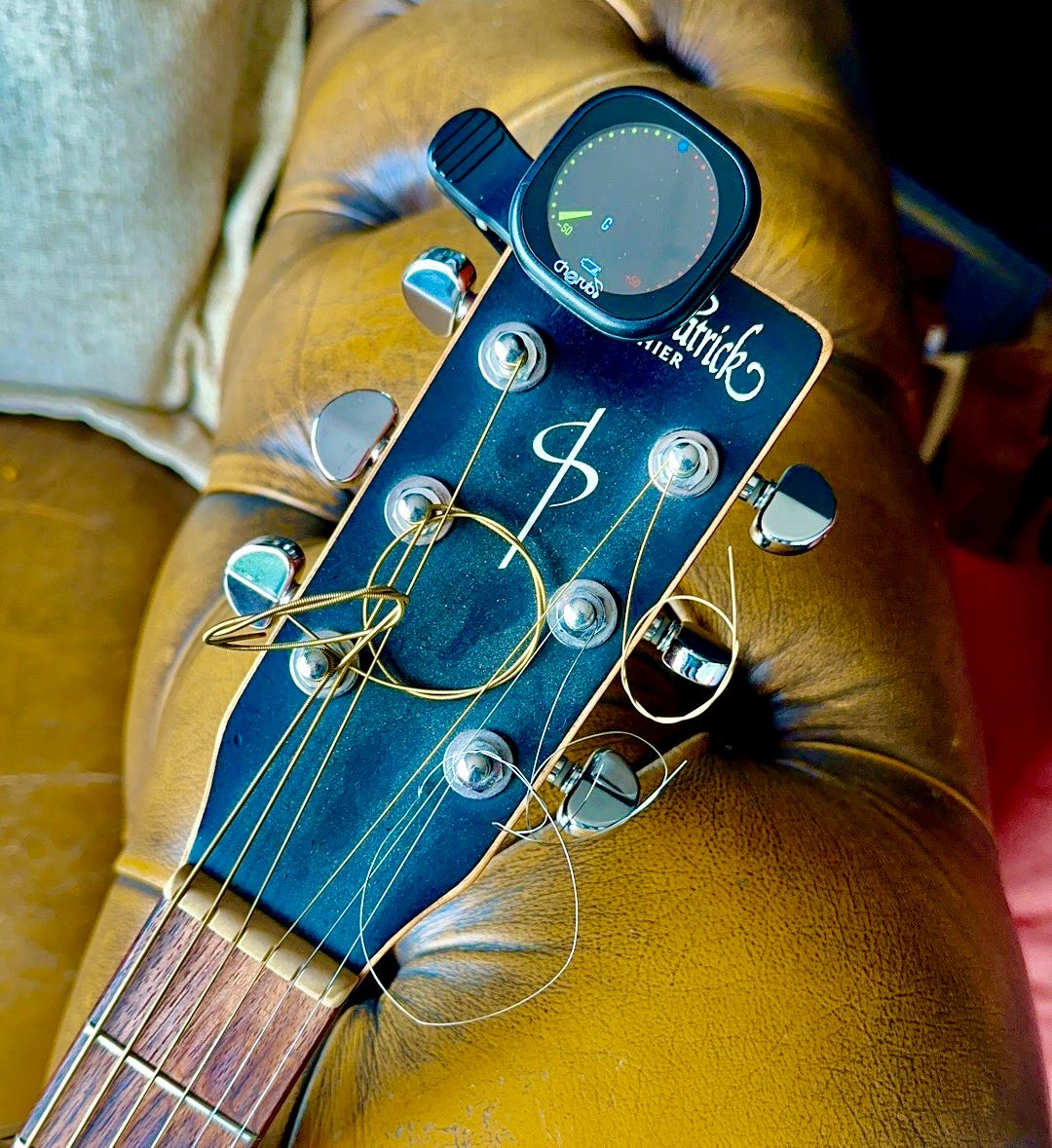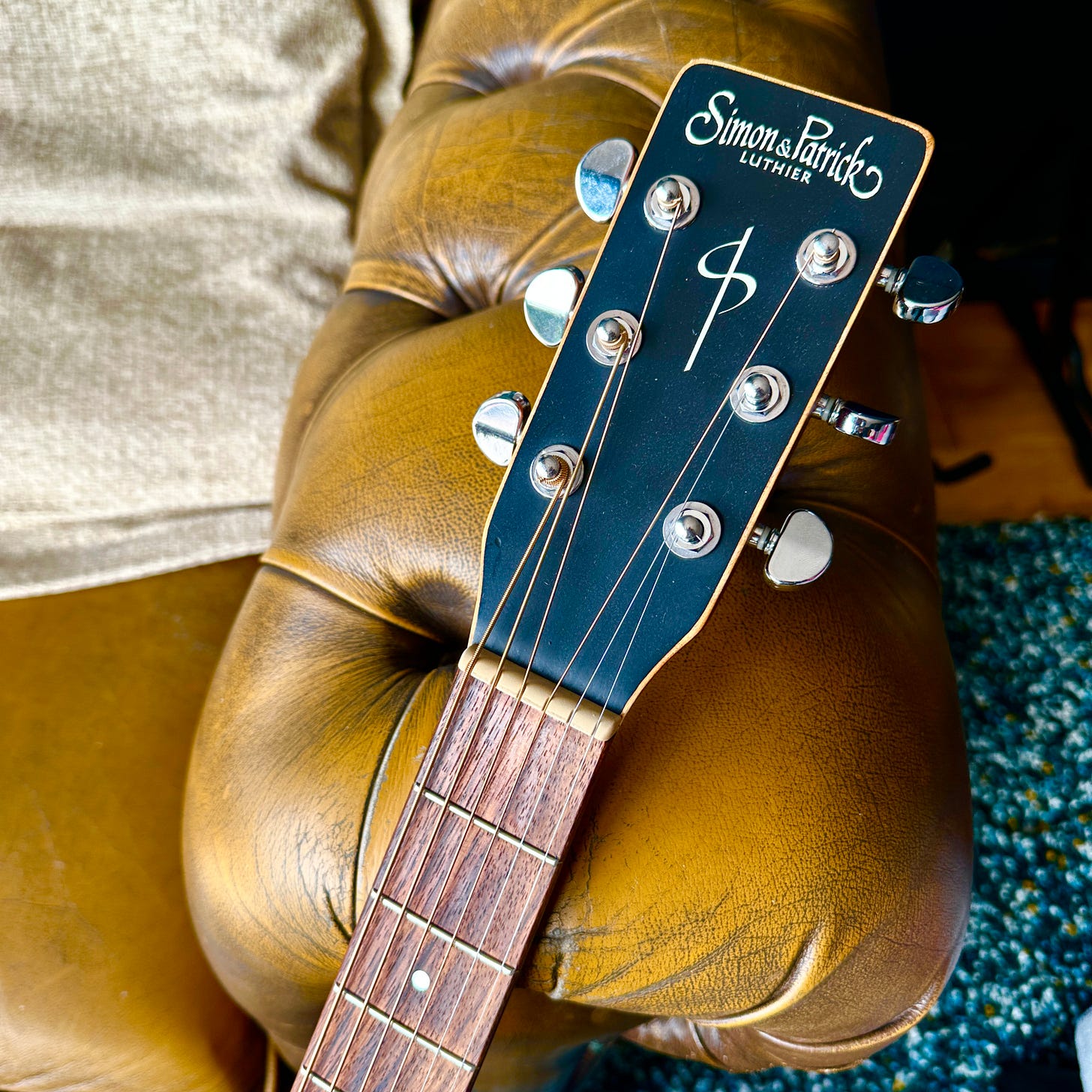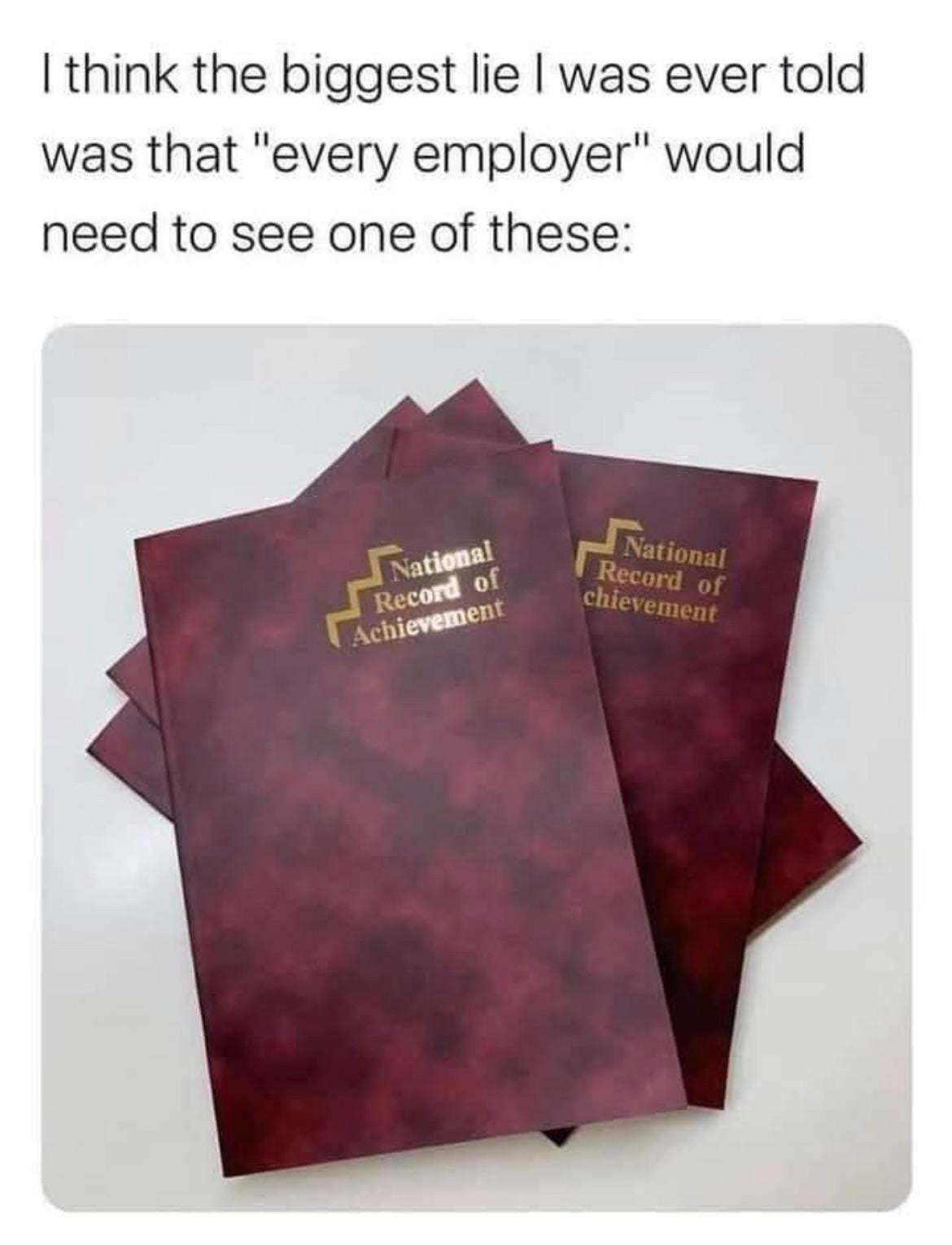#46: How to get your CV show-ready (6 steps!)
And a tenuous guitar strings metaphor
You might know by now that I play guitar. I’ve been self taught over 30 years. I don’t do fiddly stuff, I’m a strummer really.
Last week it occurred to me that my acoustic guitar was sounding a bit, well, dull.
I’d noticed the strings weren’t looking their best and I tried to remember when I’d last changed them. I couldn’t.
So I changed them.
I took all the old ones off, finally getting rid of the mess I’d left by not trimming the left over bits of string from the top of the guitar (where all the tuning knobs are - that’s called the headstock).
The knobs themselves were fine, the headstock was fine, if a bit dusty.
The fretboard was manky. It needed a gentle clean with a toothbrush and re-oiling.
The body of the guitar received a good clean, and then I restrung it with nice new strings. And once tuned up, it sounded like a different guitar. It looked nice, too.
The tone had a sparkle to it that it had lacked for ages, I just hadn’t noticed it had become so, well, meh.
Imagine for a moment… going up on stage. You know your songs, you perform well… but the audience are only getting 60% of what you’re capable of - because your guitar sounds duff.
Now take your old CV, the most recent version originally written in 2004. That’s when Facebook was born. How many iterations and design changes has that had since then?
Lots.
How many has your CV had? Probably not many.
You’ve probably just added and added and added new jobs to that same CV. If you’re good, you’ll have edited down the earlier jobs so you don’t have a third of a page about something you were doing when Mark Zuckerberg was popping zits on his chin. But perhaps you haven’t.
Like my guitar, your CV needs to resonate sweetly with the ears (eyes?) of the reader. That means taking it apart, giving it a really good clean, and putting some new strings on. Or words. New bullet points.
Did I throw out the whole guitar? No! So there’ll be plenty in your existing CV that’s salvageable. But, it will need a thorough edit.
So here’s some steps you can follow:
1 - Tidy up the top.
Give your name (not all your middle names - just how you are called, this isn’t a passport application), mobile number, email address, town and postcode, and a link to your LinkedIn profile if you have one. Add a job title - you can change it each time you you apply for a different job - just align it to the application. Like this:
Phil Sterne | Career & Life Transformation Coach
No “curriculum vitae”, no date of birth, no marital status, no kids, no inside leg measurement or favourite colour.
2 - Remove and replace the profile section.
You don’t need to title it Profile or Personal Statement - that’s taking up space.
Write it in the first person, talk about the problems you solve and for whom, what people know you for, and what you enjoy at work. Ditch words like excellent, outstanding, pioneering, spearheading, and make it a touch more conversational. Break it up into 2-3 line mini paragraphs to aid readability.
3 - Trim that skills section.
Like my messy strings, vomiting all your interpersonal, transferable, and technical skills into a third of a page will not help you look good. Sure, have them all there in a master version and add to it when you pick something up from a job advert…
But please please edit it down to 10-12 keywords relevant to the specific job application. Make it dead easy for eyes to scan. Call it “Key Skills and Expertise” if that helps you focus. Not everything you’ve ever touched.
4 - Clean up your experience.
Give context to each job. Tell the reader a couple of headlines about the employer, like what they do/sell, and who for/to. How big are they (£turnover/employees).
Do the same for your job. Jettison long lists of responsibilities, and refine the main gist of your job into a 2-3 lines. Focus on context (size of your team if you’re a manager, size of budget if you have one) and the problems you’re there to solve.
Then use the bullet points to demonstrate what you delivered, leading each line with a verb in the past tense.
Delivered, Led, Designed, Created, Redeveloped, Built, Grew, Reduced, Improved, Saved, Halved, Doubled, Assessed….
Oh, and edit down your earlier experience. You don’t need the same amount of detail for a job in 2004 as you have for your current one. Much less.
5 - Tune your education.
Your CV is all about context, recency, and relevance. If you’re just joining the job market, definitely include your secondary education grades. 48? Stick to your highest level of attainment. If that’s degree-level, great. If it’s a City & Guilds in Engineering, great.
Add professional certifications - Prince2 or whatever, if it’s relevant. All those internal and non-accredited courses you did in management? Just be selective, most people learn managing on the job.
Some of my clients have four degrees, others are in very senior roles having left school with barely a pat on the back. What I’m saying is don’t include everything that was in your National Record of Achievement (if you were in the education system in the 80s and 90s).
6 - Make “Interests” interesting.
Socialising with friends? Leave it. Cooking? Well, cooking what cuisine? Running? How far/frequently? Reading? What sort of books? Whatever it is try and give some context or value.
So there we have it.
I’m off to learn White Wedding by Billy Idol for my next gig.
Phil
3 things from me you might like:
1 - Avoid the embarrassment of misspelled words
2 - Achieve happiness and fulfilment with these 6 lessons
3 - How to get an awesome reaction to your CV
Want more help with your CV?
I’m now limiting the volume of CV writing clients (though you can ask me about my waiting list, just hit “reply”) so I can focus on building my coaching practice.
Thankfully, I can still be at your side writing your CV with you. Check this out.
Support these articles…
I’ll carry on writing these articles, though you can help me keep going by…
1 - Hitting the Share button and share on socials or with friends by email. Or both.
2 - Hitting Subscribe and part with a little cash.
Become a free Subscriber and you’ll get the fortnightly content from me. Happy days.
Get a paid subscription and you’ll unlock access to 48 articles to help work work out for you and direct you towards living a better life.
Plus the occasional early bird offer, event notification, and anything else I want to reserve for my paid Subscribers.
See you next time!




